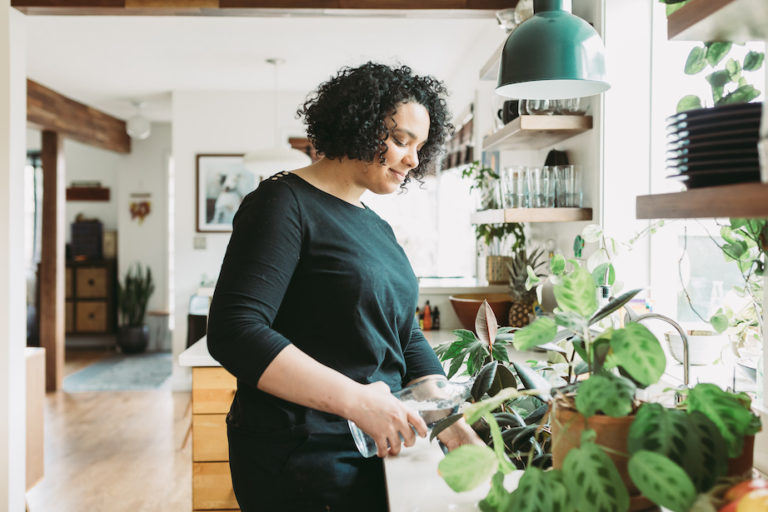Did you know that Americans generate more than 250 million tons of trash every year? That’s an average of more than 1,600 pounds per person. Which is the weight of a small car! (Or a large cow.) No amount of smart recycling can really make up for all that trash.
Another news flash—the way we deal with food is a big part of the problem. Since food is part of our daily lives, it’s hard not to create some waste with it. But with a few simple lifestyle changes, we can all reduce what we’re wasting.
Here are six simple changes to start working into your life and home today to reduce the amount of food-related trash you (and yours) produce.
1. Cook more, take out less
Takeout packaging is the largest documented source of urban trash that shows up in our bays and oceans. Yikes. By one estimate, Americans chuck enough paper and plastic cups, forks, and spoons every year to circle the equator 300 times. Yikes again!
One simple way to help is to cook more and order takeout less. We know life is busy, and takeout is often the quickest and easiest option. To ease the pain, you might consider using Sunday afternoons to grocery shop and prepare meals for the week ahead. Depending on what you cook, this can also save you money. Or start thinking of takeout food as a treat—something you get only on Friday nights to reward yourself for surviving another workweek.
2. Eat what you buy
Food itself is the largest single source of waste in the U.S. We landfill 33 million tons a year, enough to fill the Rose Bowl Stadium every day. As much as half of that comes from consumers, the rest from businesses.
So eat what you buy, and if you can, only buy what you’ll eat. Head to the grocery store armed with a specific list of what you need. It helps to plan a couple of meals in advance. And never, ever grocery shop while hungry. It’s the best way to buy more food than you need.
3. Compost
Okay, that hard nub at the top of a carrot tastes bad. But microorganisms will love it. You don’t even need special composting knowledge to get started. Nature will eventually do its work if you simply throw your scraps in a pile outside and cover them with some leaves or grass clippings each time.
If you’re a city-dweller with limited outdoor space, this can be hard. But a quick online search should reveal local composting options. Some companies will take your food waste for a small fee, and some will even bring back the compost-rich soil for you to use in your own garden. Certain cities also provide heavy-duty composting for biodegradable stuff that can’t go into the typical backyard compost pile, like:
- Foods like bread and chicken bones, and cooked food
- Soiled paper, like pizza boxes
- Yard waste you don’t have the space to compost
- Waste cooking oil, which is collected to turn into biofuel
4. Buy from bulk bins (and BYOB)
Nearly 25 percent of our trash is containers and packaging, a lot of it from food. The simple (and sometimes fun) solution is to shop from bulk bins, and of course BYO bags to fill. Keep a few small bags inside your big one. And check your area for local food co-ops, which often have great bulk sections.
5. Drink tap water
Every 27 hours, we toss enough plastic bottles of water to circle the equator. And guess what: about half of that water is in fact sourced from … municipal tap water. So why not just drink straight from the tap yourself? Get a reusable bottle to carry with you, which will reduce waste and keep more cash in your pocket in the long run. (It might even help you drink all that water you’re supposed to get throughout the day.) Opt for a reusable glass bottle instead of plastic if you’re looking to do even more good for yourself and the environment.
6. Actually recycle
America has one of the lowest recycling rates of any developed nation: we recycle only half of our packaging. One issue is that many communities don’t have curbside pickup. If yours doesn’t, call your Department of Public Works: there’s probably a municipal or private recycling facility nearby. And make sure to read up on what is actually recyclable in your area. It’s surprisingly common to throw the wrong items into the bin (for example, paper towels).




